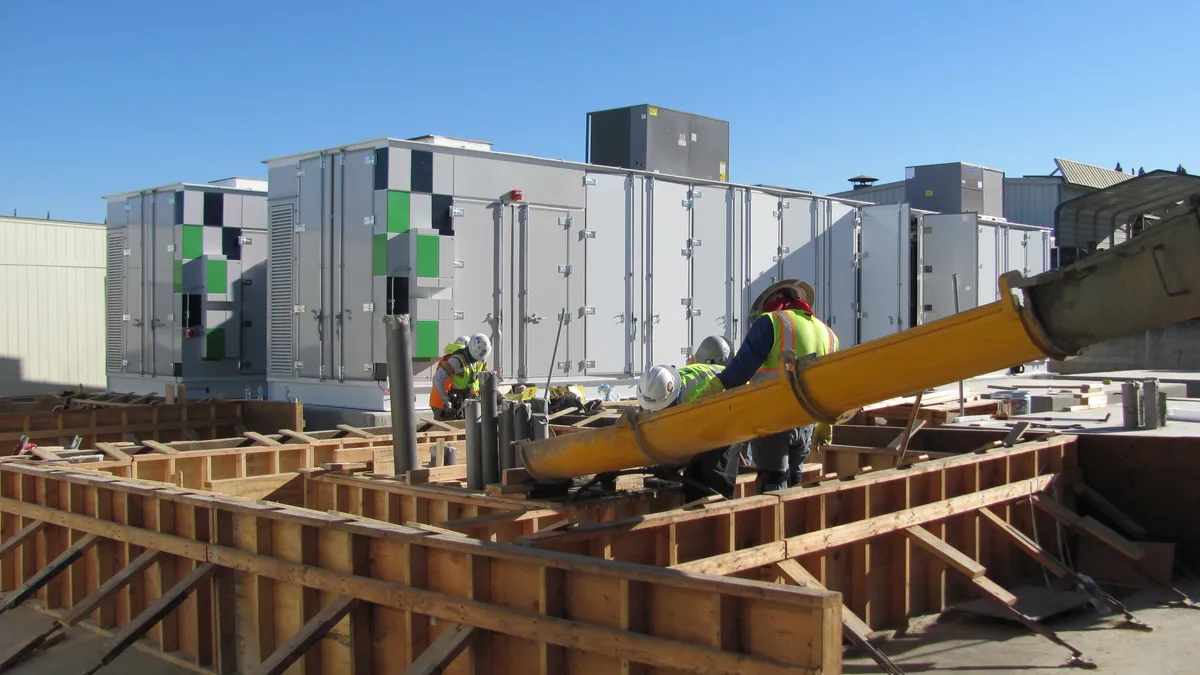Dive Brief:
-
The New York State Energy and Research Development Authority (NYSERDA) on Monday filed its energy storage implementation plan, which aims to incentivize deployments and help the state meet its 3 GW by 2030 target.
-
The plan targets retail and bulk market storage incentives, allocating $130 million and $150 million toward growth in those sectors, respectively, and proposing the remaining $70 million of a $350 million fund be allocated toward "opportunities that have the greatest potential to build a self-sustaining storage market."
-
Gov. Andrew Cuomo, D, last year called for a storage goal of 1.5 GW by 2025, and the state's Public Service Commission later established the 3 GW goal, directing NYSERDA and the Department of Public Service (DPS) to recommend next steps.
Dive Insight:
NYSERDA's filing is "an enormously positive step" in the state's deployment goals, Bill Acker, executive director of New York Battery and Energy Storage Technology Consortium (NY-BEST), told Utility Dive. It will advance New York's goal to reduce greenhouse gas emissions 40% by 2030 and shift to 100% carbon-free electricity by 2040, he said.
The plans follow Gov. Cuomo's announcement earlier this month of new emissions regulations aimed at phasing out less efficient power plants and encouraging plant owners to replace the lost capacity with battery storage or other clean energy options. Along with the storage target, the state also wants to add 9,000 MW of offshore wind by 2035 and 6,000 MW of distributed solar by 2025.
Under NYSERDA's plan, "incentives are offered at a fixed amount per AC kWh of usable storage capacity."
Retail incentives can be applied to standalone or paired storage projects of 5 MW or less, considered on a first-come, first-serve basis, starting at $350/kWh and winding down as each funding block is filled.
Bulk incentive programs are offered in all state investor-owned utility service areas besides that of Consolidated Edison, which is running its own bulk incentive program. Projects under 20 MW will receive a projected $110/kWh, ramping down $10 each year until 2025, subject to market changes. Projects over 20 MW that will begin operation within the next two years will receive either $85/kWh or $75/kWh, depending on the class year.
According to Acker, the bulk market storage incentives were not included in the original January plan and were added in response to stakeholder input.
Currently, New York does not allow for dual participation of energy storage in retail and wholesale markets, which has been a point of contention for storage developers in the state. However, the state's grid operator, the New York Independent System Operator (NYISO), has said it would review those rules after incentive programs are rolled out and Acker noted NYSERDA "appropriately identified those barriers."
Another potential hurdle for storage development in the state is its slow interconnection process, which NYISO is hoping to make more efficient as projects continue to deploy, the grid operator told Utility Dive earlier this year.
States see energy storage as a critical tool to moving away from coal and natural gas reliance and toward renewable energy across the country as more set ambitious clean energy targets.
Several states have set storage targets, as part of their emissions reductions goals, including New Jersey, California and Massachusetts. A recently proposed bill in Illinois that would bring the state to 100% renewable energy by 2050 aims to incentivize storage development through a clean peak program.














